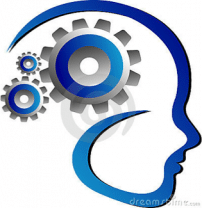
 Original article on pro.psychcentral.com
Original article on pro.psychcentral.com
In my 40-plus years of being in the field of psychology, one thing that often strikes me is how clients come to therapy lacking basic life skills. Even the most successful and accomplished clients frequently need some education on basic life skills such as to how to manage stress, how to deal with anger, and how to communicate assertively without lapsing into non-assertion or aggression, to name a few.
It became clear to me as my career progressed that as therapists we have an obligation not just to listen, not just to support – but to educate!
It is often thought that teaching clients is telling them what to do – but this is far from the case! Teaching does not mean telling! Rather, using learning tools such as handouts, worksheets, role-playing, visualization, experiential activities and mini-lessons, mental health professionals are in a unique position to offer clients the “how-tos” of making changes.
Teaching life skills conveys strategies that are not generally learned in school or even in life – especially for clients who are not raised in emotionally validating environments. This proactive approach empowers clients with tools for life, and helps them experience change constructively. Beyond talking is “doing,” and you can offer clients opportunities to experience and try out new behaviors, thoughts and skills.
With this premise of the importance of psycho-education, each week in this blog, I will offer a life skill and a handout, worksheet and/or activity that you can use with your individual or group clients.
One of the most important life skills I have taught clients over the years is the “how-tos” of eliminating cognitive distortions. Based on the works of CBT notables such as Aaron Beck and David Burns, the ability to eliminate cognitive distortions has literally changed some clients’ lives. Limiting cognitive distortions help clients stick to the facts, not their interpretations. By identifying their types of cognitive errors, they are more able to replace unhealthy thinking with more helpful and rational thoughts.
This link connects to a worksheet on Cognitive Distortions. This is by no means an all-inclusive list, but it offers clients a taste of common types of distortions and helps them become more objective about their ways of thinking.
http://www.belmontwellness.com/problematic-thinking-habits-belmont/
Often in my counseling sessions, when my clients say something that reflects distorted thinking, I stop them to ask what type of distortion that statement reflected. As time goes by, they become better at identifying the type of distortion, and with this objectivity, are more easily able to replace their erroneous thinking with constructive thinking.
For homework, I often have my clients use David Burn’s Triple Column Technique, which is to write their erroneous thought in the first column, then in the second column identify the type of distortion, and then in the third column write the more rational response.
I also like to use acronyms to help clients remember important life skills. Using acronyms for breaking down cognitive distortions makes it “user-friendly” and employs humor. Elisha Goldstein writes in his book, Uncovering Happiness, of how to Crack the NUTS – Negative Unconscious Thoughts. Aaron Beck refers to identifying the ANTS – Automatic Negative Thoughts. I made up this worksheet to help clients use these acronyms.
Using worksheets such as these with your clients will provide your clients life skills learning to last a lifetime of thinking straight to feel great!
I welcome comments and suggestions on what you do to help clients improve their ability to eliminate cognitive distortions!

